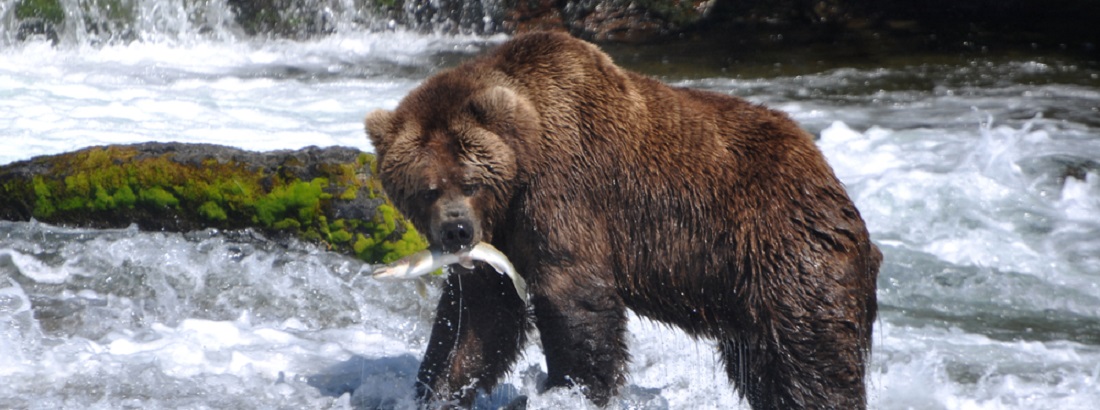Deep in the green, primeval forests of the British Columbia Central Coast, elusive large white animals roam. They are called "Spirit Bears” or Kermode Bears and result from a recessive gene among the local Black Bears. Only 10% of Black Bears in the area are Kermode, so though we expect to see Black Bears, it will require good luck and perseverance to spot a Spirit Bear. When you sail the Great Bear Rainforest, you see islands and intricate waterways beneath towering mountains; lush, coastal temperate forests; wilderness alive with eagles, ravens, salmon, bears, and wolves; 10,000-year-old Indigenous cultures; and now the opportunity to adventure along these waterways inside the forest, search for wildlife, meet local guides, and learn why the Great Bear Rainforest is one of the last gems on the Pacific Coast.
We travel a long, convoluted maze of narrow waterways and fjords. Emerald forests of Western Hemlock and Western Red-cedar cloak lush river valleys and broad estuaries. Biologically abundant and diverse, this area is also ecologically fragile. Along our route, we are ever on the lookout for magnificent Grizzly Bears, animals that require large areas of habitat undisturbed by human activity. The rainforest is home to a significant population of Gray Wolves and a rich and varied bird population, including Bald Eagles and colourful seabirds such as Pigeon Guillemots and Rhinoceros Auklets. During our voyage, there are excellent chances of seeing Humpback Whales, Gray Whales, and Orcas. We travel in this area with permission from the local Gitga’at, Kitasoo, and Xais Xais people (members of the Tsimshian Nation). We plan to spend a day with local Gitga’at guides, sharing in their culture and history and visiting their favourite bear-viewing sites. We also intend to visit ancient villages where old building remains lie, see petroglyphs, and visit the newly built longhouses in Klemtu or Hartley Bay. There is something almost ethereal in these waters and along these shores. Join us to venture into a world apart on this chartered expedition cruise.
What’s included: Accommodation in double occupancy aboard the Island Odyssey; $100 Sustainability Fee in support of conservation and research; ground transfer from Terrace accommodations to embarkation point at Kitimat on Day 1; ground transfer from disembarkation point in Kitimat to the Terrace airport on Day 8; all meals, as listed in the itinerary; all activities while on board the ship and ashore; park entrance fees; first Nations protocol fees; services of crew and local naturalist; full use of all facilities aboard the Island Odyssey.
Ship Information
A 68-foot ketch, The Island Odyssey was built as a luxurious private yacht in 1984. It completed a major renovation in 2003 to update the cabins and all safety systems. It features 8 private double-occupancy cabins, 3 shared bathrooms with hot showers and a comfortable salon with a natural history library. On deck, the large deckhouse provides a comfortable spot to watch for wildlife.
Cabins are of irregular sizes. Each has accommodation for two people — some cabins with one double bed, most with two single bunks, often an upper and lower style.
A graduate of the University of Guelph, Catherine Jardine is a staff ornithologist and data analyst with Birds Canada, based at the organization’s National Data Centre in Delta, B.C. She has conducted field projects in remote locations around the world and is the Bander-in-Charge at the Iona Island Bird Observatory.






























 Birding Tours
Birding Tours Active & Walking
Active & Walking


















